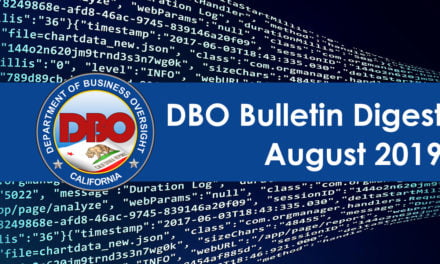This article outlines the federal Reg. Z and California rules for brokering high-cost personal-use equity loans or refinancing secured by the borrower’s principal residence, called Sec. 32 or Cal-32 loans.
Negotiating a Reg. Z Section 32 loan
A loan broker places loans with one of several different trust deed investors he works with but does not represent. Most of the trust deed investors are fairly risk averse, wanting:
- solid equities as security;
- matured ownership with an excellent repayment history; and
- a property location which demonstrates a high level of liquidity when placed on the market.
However, he also places loans with a few investors who will take risks which might require them to foreclose during a real estate recession, and then own and operate the property until buyers return to the market. The premium received for taking these risks is high in terms of the interest rate and points they charge, called portfolio yield.
The broker is contacted by a borrower who needs a personal-use loan. Discussions indicate the loan will be a high-risk investment for a lender. Any coupling of economic or financial events which adversely affect the borrower could easily bring about a default. Security for the loan would be the borrower’s principal residence which is presently encumbered with a 60% of value loan.
A loan application is accepted. [See first tuesday Form 203]
The borrower wants to repay the loan in monthly payments on a 30-year amortization, with a final/balloon payment in three years. Presently, the borrower’s credit is insufficient for conventional lending sources to refinance the property at 80% of value, or obtain an equity loan. However, the borrower believes he will have greater job stability and an acceptable credit rating which will allow him to refinance and pay off both encumbrances in three years.
The brokerage fee for arranging the loan will be 6%, contingent on recording a loan. The employment is documented in a loan broker listing agreement entered into by the borrower. [See first tuesday Form 104]
The net proceeds from the loan are for personal use to pay off accumulated credit card debt for family expenditures and to fund the re-roofing of his home. [See first tuesday Form 206]
A loan package is worked up by the loan broker for presentation to trust deed investors. An investor who makes solid equity loans on SFR property is approached with the package, but turns it down after a cursory inspection of the home and surrounding area. A more aggressive lender reviews the package, does some initial additional investigating beyond the loan broker’s due diligence package and agrees to make the loan. Terms: 12% annual interest with four points, monthly payments on a 30-year amortization and a three-year due date.
The personal-use purpose for the loan together with the use of the equity in the borrower’s principal residence, a one-to-four unit residential property, as security for the loan puts the broker on notice he has a rescindable Reg. Z loan. Thus, the lender is initially required to deliver to the borrower both:
- a Reg. Z truth in lending disclosure [See first tuesday Form 221]; and
- a notice of right of rescission. [See first tuesday Form 222]
Repayment limitations under Sections 32 loans
As a Reg. Z loan, the loan broker is now confronted with lender yields and fees which exceed both Reg. Z Section 32 threshold tests for personal-use loans secured by an equity in a one-to-four unit residential property which is the borrower’s principal residence:
- the APR on the total loan amount exceeds the applicable treasury securities rate by more than eight percentage points; and
- the points and fees exceed 6% of the total loan amount. [See first tuesday Form 223-1]
Now classified as a Section 32 loan under Reg. Z (and a Cal-32 “covered” loan), the broker must also provide the borrower with a supplemental Reg. Z disclosure. The supplemental disclosure contains a Section 32 notice, and recalculates the total loan amount and APR. [See first tuesday Form 223]
Further, must the broker negotiate a restructured payment schedule on this loan in order to comply with Reg. Z Section 32?
Yes! Two issues arise when a Reg. Z loan has a high interest rate or high points and fees which cause the loan to also be classified as a Section 32 loan:
1. The supplemental Reg. Z disclosure must be delivered to the borrower at least three business days prior to closing; [12 Code of Federal Regulations §226.31(c)(1)] and
2. Limitations on the repayment schedule require the loan to be arranged in compliance with those limitations. [12 CFR §226.32(d)]
To make this loan at the interest rate yield sought by the trust deed investor or the fees charged by the broker, the investor must comply with the following repayment limitations:
- the due date for any final/balloon payment to be five or more years after closing; or
- the loan must be fully amortized through regular periodic payments within five years after closing.
Loan repayment provisions for a Section 32 loan are limited to:
- a final balloon payment no sooner than five years after closing, if not fully amortized over a shorter period, unless the loan is a bridge or interim loan for the acquisition or construction of the borrower’s principal residence and is due in less than one year [12 CFR §226.32(d)(1)];
- no call or demand features in the note, but trust deed provisions for any acceleration of the debt on alienation, default, etc., are not affected [Fin C §4973(i)];
- periodic payment amounts no less than interest only, since negative amortization is prohibited [12 CFR §226.32(d)(2)];
- no prepaid installments or interest on closing, called advance payments [Fin C §4973(d)];
- late charge provisions for delinquencies may not include an increased rate of interest on default [12 CFR §226.32(d)(4)];
- the accrual of interest on the remaining principal, thus eliminating any add on interest initially computed on the total amount borrowed for the life of the loan and added to the principal to set the face amount of the note as the total amount of principal and interest (all payments) due over the life of the loan. [12 CFR §226.32(d)(5)]; and
- when the payment schedule varies to meet the seasonal income of the borrower, total installments in any one year may not exceed one year’s worth of regularly amortized payments unless the loan is a bridge loan. [Fin C §4973(b)(2)]
Further, a lender may only charge a prepayment penalty within 36 months after the date of the loan’s closing if:
- the borrower has been offered alternative loan terms which did not include a prepayment penalty;
- the prepayment penalty is disclosed to the borrower in writing at least three business days prior to closing the loan;
- the lender limits the prepayment penalty to six months’ advanced interest on the amount of principal prepaid in any 12-month period in excess of 20 percent of the original principal amount;
- the prepayment is not the result of the lender’s acceleration of the loan due to a default; and
- the lender will not later fund payment of the prepayment penalty by refinancing. [Fin C §4973(a)(2)]
Further, a refinancing of the loan after 36 months by the same private lender or a controlled business may not fund the payment of any prepayment penalty on the loan being “rolled over” into the refinancing if:
- the homeowner’s total monthly debt payments at the time of refinancing exceed 50% of the borrower’s monthly gross income. [Fin C §4973(a)(1), 12 CFR §226.32(d)(7)]
Supplemental Reg. Z disclosures
The private lender making a fixed-rate Section 32 loan is required, in addition to the regular Reg. Z disclosures, to make a supplemental Section 32 disclosure containing:
- The amount borrowed from the private lender, as set by the loan agreed to under the loan application; [See first tuesday Form 223 §2]
- the APR based on the total loan amount financed under Section
32, as well as the total points and fees; [Fin C §4979; See first tuesday Form 223-1 §6]
- the amount of the periodic payments and any final/balloon payment; and
- the following statement: “You are not required to complete this agreement merely because you have received these disclosures or have signed a loan application. If you obtain this loan, the lender will have a mortgage on your home. You could lose your home, and any money you have put into it, if you do not meet your obligations under the loan.” [12 CFR §226.32(c); See first tuesday Forms 223 and 223-2]
The Section 32 supplemental disclosures are not required to be contained in the note or loan documents, or provided to the borrower in any specific manner. [12 CFR §226.32(c); See first tuesday Form 223]
The regular Reg. Z disclosures must always be made on a personal-use loan, whether or not it was also classified as a Section 32 loan.
The time for disclosures
All Reg. Z disclosures and rescission notices of the right of rescission on a loan classified as a Section 32 loan must be handed to and acknowledged by the borrower before the three-business-day waiting period begins to run. [12 CFR §226.31(c)(1)]
No particular method for delivering Reg. Z disclosures and right-of-rescission notices is mandated. The only delivery requirement states the borrower must actually receive all the disclosures (and the Reg. Z notice of the right to rescind) at least three business days before closing the loan, regardless of the method of delivery. Only after the three business days have run on the last Reg. Z document delivered to the borrower, including the signed loan escrow instructions, can the lender proceed to close the loan escrow. [12 CFR §226.31(c)(1)]
Most sensibly, the loan broker should meet with all co-owners of the borrower’s principal residence at least on the third business day before funding. The meeting is to have the borrower acknowledge receipt of the Reg. Z documents — the regular Reg. Z disclosure, the notice of right to rescind and the Section 32 disclosure.
Faced with an urgency which necessitates immediate release of funds by closing the loan escrow, a borrower may occasionally present the lender with a bona fide personal financial emergency. Here, the three-business-day waiting period may be modified or waived by the borrower after he receives the disclosures. [12 CFR §226.31(c)(1)(iii)]
For example, a foreclosure sale on the borrower’s residence is dictating the time for closing the loan. The sale is scheduled to be held following the Reg. Z disclosure and rescission notice, during the three-business-day waiting period prior to closing. Thus, a bona fide personal financial emergency exists. Funding the loan is necessary to prevent the foreclosure sale (and loss of property) which was the purpose for obtaining the loan in the first place.
The borrower in an emergency funding situation can only waive the waiting period after receiving the disclosures and the rescission notice. The borrower then waives the waiting period by delivering a signed and dated written statement, not a pre-printed form statement, describing the emergency to the lender. It then becomes the lender who must make the decision whether to accept the waiver and fund the closing. [12 CFR §226.31(c)(1)(iii)]
Modification and redisclosure
If the terms of the loan are changed during or after the three- business-day waiting period to the extent the disclosures become inaccurate, a new disclosure must be provided to the borrower. Redisclosure with an accurate supplemental Section 32 disclosure restarts the three-business-day waiting period. [12 CFR §226.31(c)(1)(i)]
However, if the change is a result of the borrower’s actions, the redisclosure may be made by phone. When the new disclosure resulting from the borrower’s action is delivered by phone, then at the time of closing:
- the borrower must be provided a new written Section 32 disclosure; [See first tuesday Form 223] and
- the disclosure must include a statement, signed by the private lender and the borrower stating the redisclosure was made by telephone at least three business days before closing. [12 CFR §226.31(c)(1)(ii)]
Sale of a Section 32 trust deed note
Occasionally, a loan broker will both arrange and make a Section 32 loan using his own funds. Later, he will sell and assign his note and trust deed to a trust deed investor who acquires it. Before assigning the note and trust deed, the trust deed investor must be provided with the following Reg. Z Section 32 notice.
Notice: This is a mortgage subject to special rules under the federal Truth in Lending Act. Purchasers or assignees of this mortgage could be liable for all claims and defenses with respect to the mortgage that the borrower could assert against the creditor.
This notice should be stamped on the face of the note. Alternatively, wording could be added to the face of the note referencing an addendum containing the TILA notice which is attached (by staple) to the note, called an allonge.













